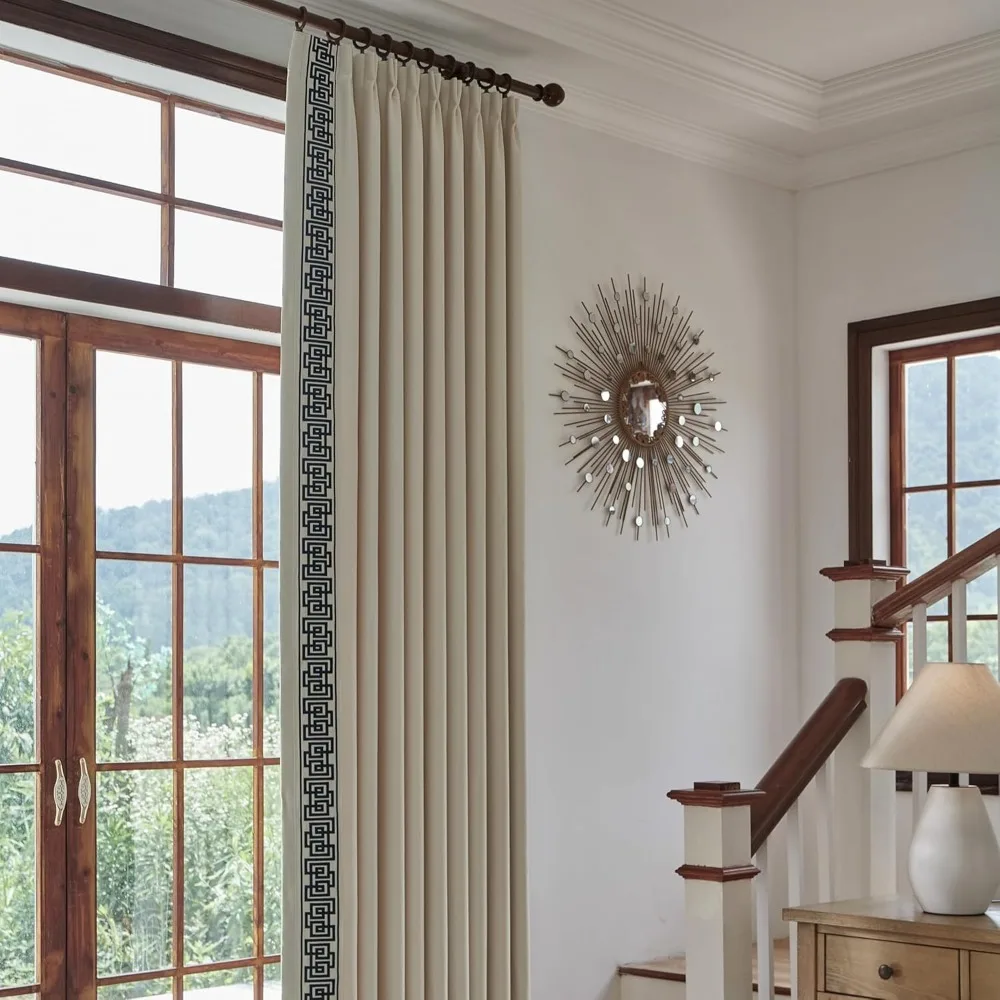Introduction to Types of Blinds and Their Mechanisms
Understanding the various new blinds types and mechanisms is key to solving lowering problems. Let’s explore your options.
Horizontal and Vertical Single-String Blinds
Single-string blind feature a solo cord for control. Pull it to adjust light and privacy.
Versatile Top Down-Bottom Up Blinds
These blind offer dual adjustment. Modify light intake from top or bottom as needed.
Easy-to-Use Continuous-Cord Blinds
Continuous-cord systems simplify operation. They move evenly for a hassle-free experience.
Safe Option: Cordless Blinds
Cordless blind are kid and pet safe. No strings mean less worry and clean lines.
Traditional Blinds with Rods
Rods control your blinds with a twist. They fit well in homes that favor classic styles.

Step-By-Step Guide for Lowering Different Blinds
Single-String Blinds: Unlocking and Lowering
To lower single-string blind, gently pull the cord to the side and down. This unlocks the mechanism. Let go slowly, guiding the blinds downwards.
Top Down-Bottom Up Blinds: Adjusting and Closing
For top down-bottom up blind, pull either the top or bottom cord. Adjust to your preferred height, then release.
Continuous-Cord Blinds: Smooth Operation Tips
Pull the continuous cord in a circular motion. Ensure even movement for steady lowering of the blind.
Cordless Blinds: How to Manage Without Strings
Press down gently on the bottom rail of cordless blind. Guide them straight down to your desired position.
Rod-Operated Blinds: Controlling Slats Effectively
Twist the rod to open slats, pull to side to unlock, then lower to close. Adjust slats for light or privacy.
Maximizing Privacy and Light Control
Achieving the perfect balance of light and privacy is key with blinds. Correct slat positioning is crucial.
Deciding on Upward or Downward Slat Positions
Choose slat direction based on desired light and privacy levels. Upward for more light, downward for privacy.
When and Why to Close Blinds with Slats Facing Up
Close blinds upward for minimal light and maximum privacy. It’s ideal when outdoor visibility is less important.
The Benefits of Downward-Facing Slats
Downward-facing slats offer aesthetic appeal and focus on style. They allow more light and less privacy.
Energy Efficiency and Aesthetic Considerations
Properly positioning your blinds can have a significant impact on your home’s energy bills and overall look. Let’s explore how.
Impact of Blind Position on Energy Bills
Optimizing blind flaps for energy savings is a smart move. Upward-facing slats deflect light toward the ceiling, keeping your home cooler in summer. Downward-facing slats trap heat to warm your home in winter. Adjusting blind according to the season can help cut down on energy use. Closing blinds on sunny sides further reduces heat intake in hot months.
Choosing Blinds for Style and Functionality
When selecting blinds, consider both looks and use. Stylish blind add to your home’s charm. Functional blind enhance privacy and light control. Different rooms may need varied styles for the best effect. Dark blind suit bedrooms for sleep. Lighter blind brighten living spaces. Always pick blind that match both your aesthetic desires and practical needs.

Troubleshooting Common Blind Issues
Dealing with Stuck or Uneven Blinds
When blinds get stuck or won’t hang evenly, it’s frustrating. Here’s how to fix them. First, examine the blind for obvious snags or tangles. Gently pull each cord, if there’s more than one, to see if this aligns the blind. If they’re still uneven, the issue may lie with the headrail. Remove the blind from the brackets and check inside the headrail for obstructions or bent parts.
Fixing a Jammed Cord or Clutch
A jammed cord or clutch can bring blind operation to a halt. To tackle this, first, ensure the blinds are fully raised. Locate the clutch, found at the top of the blinds. Using your fingers or a flathead screwdriver, gently press and twist the clutch. This might free any jam. If you find resistance or hear clicking, don’t force it. This could indicate a broken component, which might need replacing.
Resolving Roller Shade Retraction Problems
Roller shades that won’t retract are commonly due to a dirty or worn out mechanism. Pull the shades down fully to inspect. Clean any dust or dirt from the roller with a dry cloth. If they still won’t stay down, the spring inside may be too loose. Roll the shade halfway up by hand, then reinstall it. This can tighten the spring and restore proper function. Ongoing issues may mean it’s time for a replacement.
If these tips don’t help, it might be time to consider shopping for new blinds. Effective troubleshooting can save time and money, but sometimes a fresh set is the best solution for how to make blind go down smoothly.
When to Consider Blind Replacement
Sometimes, despite your best efforts, blinds may simply reach the end of their useful life. Recognizing the signs of wear and tear can save you frustration and ensure your blind operation remains smooth.
Signs That It’s Time for New Blinds
Certain indicators hint that it’s time to shop for new blind. If your blind are tough to raise or lower, make unusual noises, or have bent or broken slats, it’s likely time for a replacement. If cords are frayed or mechanisms are jammed more often than not, new blinds might be the safest choice. Another sign is if your blind no longer align properly when closed, causing privacy or light control issues.
Aesthetically, if your blind look outdated or don’t match your home’s style anymore, consider an update. Fading colors or fabric, especially from sun damage, can also suggest that it’s time for fresh blind. Lastly, if you’ve had your blinds for many years and they start requiring frequent repairs, investing in new blind could be more cost-effective in the long run.
Tips for Shopping for New Blinds
When looking for new blinds, start by assessing your needs. Think about the room’s purpose and how much light and privacy you require. Measure your windows accurately to ensure a perfect fit. Choose materials that are easy to clean and will last a long time.
Look for reliable brands with good reviews. Pay attention to safety features, especially if you have children or pets, such as cordless operation or secure cords. Compare prices and features, but don’t compromise on quality for a lower cost. Lastly, consider energy-efficient options which can help save on heating and cooling bills.
By following these tips, you can select blindsthat are both functional and stylish, providing just the right touch for your space.
Conclusion: Ensuring Proper Blind Function
Ensuring your blinds function well is not just about style. It’s key for home comfort and energy use.
Recap of Lowering Techniques
To close blinds smoothly, use the right method for your blind type. For single-string blinds, gently pull the string aside to lower. With top down-bottom up blind, adjust either end to your liking. Continuous-cord blind need a steady circular motion. For cordless blind, push the bottom rail down gently. And for rod-operated blind, twist the rod for ideal slat positions.
Importance of Safe and Effective Blind Operation
Safe and easy control of blinds is vital, especially in homes with kids and pets. Cordless blind reduce safety risks and add a sleek look. Proper operation also means blind last longer. And, by closing blind correctly, you boost home security and privacy. Remember, using blind right aids energy saving. It keeps your home warm in winter and cool in summer. Closing blind keeps your space comfortable all year round.

Frequently Asked Questions
Solving Common Lowering Problems
Experiencing issues when trying to make your blind go down? Here are quick solutions. If blinds won’t lower, inspect cords for knots or damage. Untangle or replace as needed. Are blind uneven? Check the headrail for obstructions or bends. Remove any found. Still stuck? The issue might be a jammed clutch. If you can’t fix it, a replacement may be due. Lastly, ensure your technique matches your blind type for smoother operation.
Updating Faulty Blinds Systems
Dealing with old or faulty blind? It may be time for an update. Watch for signs like tough movement, strange noises, or visual wear. These can signal it’s time for new blinds. Measure your windows accurately and choose easy-to-clean materials. Opt for reputable brands offering safety features. Remember, investing in energy-efficient blind can cut costs on bills. When your blind demand constant fixes, consider the long-term savings of new, reliable window treatments.








